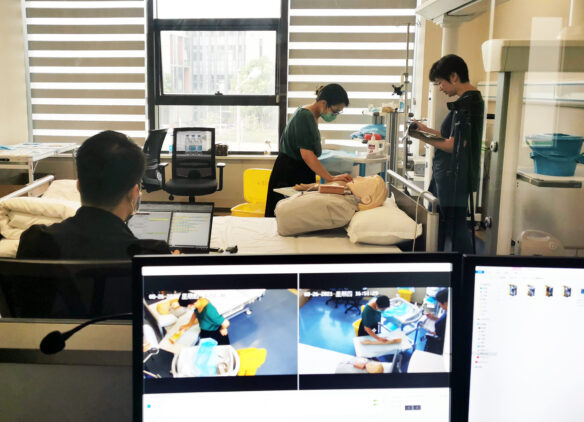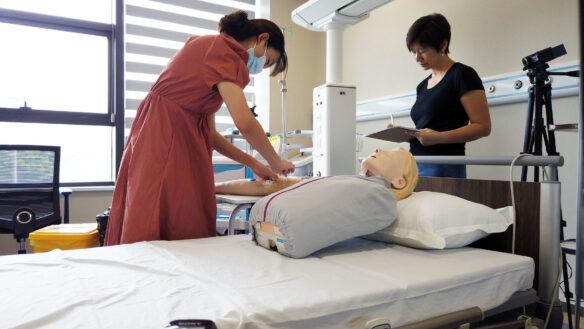NMPA Human Factors Draft Guidance: Navigating Healthcare Opportunities in China
The Center for Medical Device Evaluation (CMDE) of the National Medical Products Administration (NMPA) recently released its second draft of the “Guidance Principles for the Registration Review of Human Factors Design in Medical Devices (Second Draft for Public Consultation)”. The guidance currently focuses on Class II and Class III medical devices and provides greater clarity on the application of Human Factors and Usability Engineering (HFE) to medical devices in China.
PDD is a founding executive member of the Human Factors Special Committee and has promoted HFE principles in China since 2015. This article builds on our expertise to interpret the latest draft guidance from the perspective of medical device companies looking to release products in China. Here are the points which drew our attention.
How can I determine if my product belongs in the “high-use risk” category?
What does “high-use risk” mean? And more importantly, what does it mean for the applicants’ required human factors activities?
The terms “high-use risk” and “high-risk” are mentioned throughout the guidance. Under Chapter 3, section 2: Use-risk orientation, the guidance states that devices fall within the “high risk” category if, when used incorrectly, it may result in serious harm or even death.
But, according to the guidance, not all “high-risk” devices belong to the “high-use risk” category, and that “high-use risk medical devices are currently limited to some Class III medical devices”. Essentially, this aligns with international and FDA guidance – the fact that, in Human Factors, our priority interest is not the occurrence rate of harm, but the severity of harm from which use-related issues can arise.
The draft guidance provides a list of example Class III devices. But what should I do if my Class III device is not found on the list? The guidance states to use the following method:
- The risk of the medical device should be determined by the relevant However, this categorisation must be decided upon before the implementation of risk mitigation measures.
- High-risk medical devices are those which involve ‘critical tasks’* and are therefore classified as high-use risk medical devices, as the use-related risk has the potential for a higher severity of harm.
- High-risk medical devices with entirely new usage methods, long learning curves, or usage by non-professional users are generally considered high-use risk medical devices.
- If serious adverse events related to user use and/or user interface design occur after market launch of similar medical devices or a Class I recall, the device is considered a high-use risk medical device.
So what human factors activities is the applicant required to perform if the device is deemed “high-use risk”? Is summative usability testing required in China?
*Definition of critical task: According to NMPA, critical tasks refer to operational tasks where user actions or lack of action may lead to serious injury or death. For the FDA, a critical task is a user task which, if performed incorrectly or not performed at all, would or could cause serious harm to the patient or user, where harm is defined to include compromised medical care.

Under what circumstances should the applicant conduct summative usability testing?
PDD have a wealth of experience in conducting summative usability testing, and we are often asked whether it is necessary to conduct a summative test. Below, we have outlined the various situations where a summative test would be required.
What should I do if my device is already on the market abroad?
As expected, the guidance clarifies that there are key differences between Chinese and foreign countries’ users and use scenarios. Although the device may be marketed elsewhere, the original user interface design may not be satisfactory for ensuring safe and effective use in China.
If the medical device is deemed to be high-use risk, the applicant would be required to carry out a differences analysis between the Chinese and foreign human factors design with regards to the users, use scenarios, and regulatory submission requirements.
If differences are deemed to be acceptable, the applicant should provide the following: summative test information submitted in the original country, analysis of use- in the same product category, (known use problem search), and the human factors differences analysis report between China and the foreign country where the product has been commercialised.
If the differences are deemed to be unacceptable, the same materials above would be required for submission. However, re-validation is also required to address the differences between China and the foreign country, or a complete human factors design validation may be required.
What should I do if my device is a new product?
The guidance requires summative testing for new or innovative devices where safety and effectiveness have not yet been tested through summative usability testing (i.e., has not been marketed elsewhere). Namely:
- High-use risk entirely new products (no product exists in the market or safety and effectiveness are not fully confirmed in medical practice).
- High-use risk mature products without ‘equivalent medical devices,’* or where ‘equivalent comparative evaluation cannot be carried out or evidence is insufficient.’
- High-use risk mature products compared to ‘equivalent medical devices,’ that have newly added use risks, requiring a summative evaluation of the added risks.
- High-use risk mature products compared to ‘equivalent medical devices,’ that have differences in ‘determining factors,’ requiring a summative evaluation of the differences.
*Definition of equivalent medical devices: Medical devices that are essentially identical in their determining factors: intended use, applicable population, user group, user characteristics, usage location, environmental conditions, critical tasks, human-machine interaction methods, user training, and have already been registered and marketed domestically (registered in China).

Applying HFE principles earlier in the development process
This second draft of the guidance includes some nuances in terms of “industry practicalities” and considering ‘the right time’ when it comes to further implementation. This demonstrates the NMPA’s thoughtful consideration, both firmly promoting Human Factors design whilst encouraging companies to gradually learn and implement Human Factors.
Although currently confined to specific device types, we anticipate that future guidances will most likely widen their scope to include other medical devices and combination products.
Medical device companies operating in China should get ahead of the game and consider Human Factors early in the development process. This would not only future-proof their devices in the light of future guidance iterations, but also ensure that those devices address the needs of patients and HCPs in China, are safe and effective and offer an exceptional product experience that stands out in the market, in China and abroad.
To learn more about PDD’s insights into HFE and our practices in China, click here. To discuss your specific needs going into or building your presence in the medical device market in China, please get in touch.




